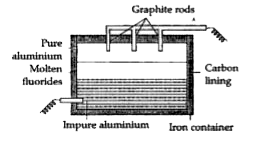What is aminoacylation ? State its significance.
Step-by-Step Solution
1. Definition of Aminoacylation:
Aminoacylation is the process by which an amino acid is attached to its corresponding transfer RNA (tRNA) molecule. This is a crucial step in protein synthesis, as it ensures that the correct amino acid is brought to the ribosome during translation.
2. Enzyme Involved:
The enzyme responsible for aminoacylation is called aminoacyl-tRNA synthetase. This enzyme catalyzes the attachment of the amino acid to the tRNA.
3. Formation of Charged Complex:
The process begins with the amino acid and ATP (adenosine triphosphate) combining with the aminoacyl-tRNA synthetase enzyme to form a charged or activated complex. This complex is essential for the next step.
4. Attachment to tRNA:
The charged amino acid is then transferred to the tRNA molecule. The specific region of the tRNA that binds to the amino acid is known as the acceptor stem. This binding is what completes the aminoacylation process.
5. Significance of Aminoacylation:
The significance of aminoacylation lies in its role in protein synthesis. By ensuring that the correct amino acid is attached to the appropriate tRNA, aminoacylation is vital for the accuracy of translation, which ultimately determines the structure and function of proteins in the cell.
Aminoacylation is the process by which an amino acid is attached to its corresponding transfer RNA (tRNA) molecule. This is a crucial step in protein synthesis, as it ensures that the correct amino acid is brought to the ribosome during translation.
The enzyme responsible for aminoacylation is called aminoacyl-tRNA synthetase. This enzyme catalyzes the attachment of the amino acid to the tRNA.
The process begins with the amino acid and ATP (adenosine triphosphate) combining with the aminoacyl-tRNA synthetase enzyme to form a charged or activated complex. This complex is essential for the next step.
The charged amino acid is then transferred to the tRNA molecule. The specific region of the tRNA that binds to the amino acid is known as the acceptor stem. This binding is what completes the aminoacylation process.
The significance of aminoacylation lies in its role in protein synthesis. By ensuring that the correct amino acid is attached to the appropriate tRNA, aminoacylation is vital for the accuracy of translation, which ultimately determines the structure and function of proteins in the cell.
Similar Questions
What is nutrient cycling? Write its significance.
View SolutionWhat is radius ratio ? What is its significance in case of ionic crystals?
View Solution(a) Define reflex action. State its significance.
(b) How do plants respond to external stimuli ?
View SolutionWhat is Reynold's number? Give its significance.
View SolutionWhat is chloride shift? Write its significance during respiration.
View SolutionThe following questions relate to the extraction of aluminium by electrolysis :
Name the other aluminium containing compound added to alumina and state its significance.
View SolutionThe following question relate to the extraction of aluminium by electrolysis:

Name the other aluminium containing compound added to alumina and state its significance.
View SolutionState what is apomixis. Write its significance. How can it be commercially used ?
View SolutionState what is apomixis. Write its significance. How can it be commercially used ?
View SolutionWhat is meant by wave-function? What is its significance ?
View Solution
